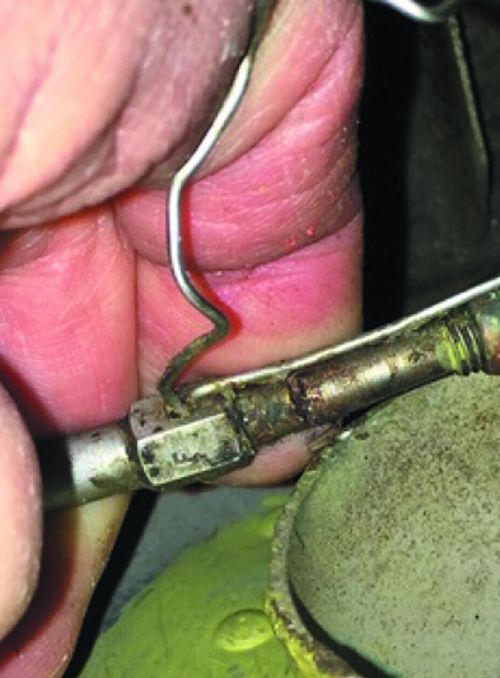The FAA is adopting a new airworthiness directive (AD 2019-21-08) for a wide variety of Beech Bonanza and Debonair models to address field reports of cracked and fractured right aileron flight control cable end fittings. The range of models includes the E33, E33A, E33C, F33, G33, 35–C33, 35–C33A, K35, M35, N35, P35, S35, V35,
V35A, 36, and certain models of the F33A, F33C, V35B and A36 airplanes. This AD requires inspecting the right aileron flight control cable end fittings (terminal attachment fittings) and replacing any damaged cable assembly.
At press time, the FAA received roughly 17 reports of the right aileron control cable end fittings failing on E33A, S35, V35 and A36 Bonanza models. The FAA estimates that the AD affects 4138 airplanes on the registry, while inspection is the only way to determine which ones require replacement hardware.
There are two different cable assemblies installed on the right aileron flight control system. The forward aileron cable assembly connects the control wheel to the turnbuckle, and the aft aileron cable assembly connects the aileron surface to the turnbuckle. These failures have occurred at the swaged cable end fittings that thread into the turnbuckle. According to the supplemental discussion in the FAA’s final rule and request for comments, the location of the cable seems to play a role in the hardware’s failure and it’s all about corrosion.
The location of the right aileron cabled fittings, just forward of the aft carry through spar and underneath a heating duct, creates an environment where corrosion may be accelerated. Also, the presence of the turnbuckle safety wire, combined with the location beneath the heating duct, makes corrosion and
cracking difficult to detect. Some of the reports of failed cable end fittings revealed that the aileron cables had been held together only by the safety wire, while other reports were of complete aileron cable separation.
According to the Special Airworthiness Information Bulletin (CE-19-13) issued in July 2019 on turnbuckle connections used in mechanical flight controls, the factors that contribute to stress corrosion cracking for stainless steel fittings of this type are exposure to contamination (chlorides) along with being under sustained tensile stress. Heat is also a contributing factor. It is therefore likely to occur more quickly in a warm, humid, salt air environment, and progresses based on calendar time rather than flight time. Based on multiple part examinations, the stress corrosion cracking originates at general corrosion pits on the surface of the parts. Because the cracks are primarily below the surface, they can be extremely difficult to detect.
If you’re qualified to inspect your own aircraft, consult the service manual and be aware that multiple failures of an aileron cable terminal have occurred in a location just forward of the rear spar and underneath a ventilation/heating duct. This applies to most Beech model 33, 35 and 36 planes manufactured between approximately 1964 and 1977, after which the aileron turnbuckles were moved to a location in the wheel well (there may be exceptions falling outside those years). Even with a 10X magnifier, spotting the issue might not be readily apparent.
Depending on whether safety wire or a safety clip is used to secure the turnbuckle, any corrosion such as this may be hidden from view by the safety wire, which needs to be removed in order to perform an adequate inspection. Being located in close proximity to the airplane battery can also be an aggravating factor. Based on reports received to date, the FAA would not expect failures to occur on parts with less than 15 years’ time in service.
WHAT CAN GO WRONG?
The answer should be obvious. If the hardware separates, there will likely be an uncommanded right roll of the airplane and loss of roll control in the left direction. You do conduct flight control checks before every flight, don’t you? This issue speaks volumes for the importance of this preflight exercise.
As for cost, the inspection alone (roughly five hours) could run close to $500 at typical shop rates, while replacement of a forward aileron cable could run north of $1600 including parts and labor. Add another $1100 if the aft aileron cable needs to be replaced.


